In this event, panelist discuss how employee stock ownership plans (ESOPs) can improve job quality, reduce wealth inequality, and strengthen our economy. They highlight how the coming “silver tsunami” of retiring business owners represents a once-in-a-generation opportunity to grow the number the ESOPs. And they explore the policies, supports, and assistance that businesses — including publicly traded companies — need for ESOP conversion.
As growing numbers of business owners retire, efforts are underway to help them convert their business to employee ownership, including worker cooperatives. Despite this momentum, however, worker cooperatives remain a small part of the US economy, and growing the model can be challenging. In this event, panelists share success stories — at home and abroad — and discuss what we can learn from them, including how to remove barriers to cooperatives’ growth.
It takes intention to design a workplace culture that fully leverages the strengths of employee ownership. In this event, panelists discuss the diverse ways that employee ownership can be realized for a business, including employee stock ownership plans, employee ownership trusts, worker-owned cooperatives, and equity compensation programs. Each holds different advantages and disadvantages, and they can differ in their profit sharing, costs, flexibility, and how workers are involved in decision making.
This piece reflects on the Aspen Institute Economic Opportunities Program’s event “Democratizing Work: The Role, Opportunities, and Challenges of Worker Cooperatives in the US,” which introduced the US movement for worker cooperatives and discussed their potnetial to improve job quality.
The profile features an interview with A Few Cool Hardware Stores founder and CEO, Gina Schaefer, who explains her decision to convert to an ESOP, the process of transitioning to employee ownership, and the challenges and successes she and the new employee owners have encountered along the way. Gina recently published a book, Recovery Hardware, about the business’s journey in helping revitalize neighborhoods and in supporting employees to improve their lives.
This issue brief reviews the history and current state of job design, highlights the benefits workers and businesses receive when jobs are designed with worker well-being in mind, and notes emerging issues and practices in job design related to technology, work-based learning, and employee ownership. We hope this brief sparks new thinking and conversations about how we can all encourage and contribute to designing work and workplaces that promote quality jobs.
This article investigates the impact of employee ownership on business and worker outcomes, including links to improved productivity, pay, job stability, and firm survival. The article dives further into the effects and causation relationship, as well as the challenges presented by employee ownership.
Drawing on recent research, this issue brief – co-authored by the Aspen Institute Economic Opportunities Program, the Institute for the Study of Employee Ownership and Profit Sharing at Rutgers School of Management and Labor Relations, and the Democracy at Work Institute – makes a case for why policymakers, funders, and investors who care about racial and gender wealth equity should support employee share ownership. Informed by a roundtable discussion which brought together researchers, philanthropic leaders, investors, policy experts, and advocates, the paper provides a set of concrete policy and practice ideas to expand employee ownership and advance equity and economic justice. We hope this paper contributes to a broader collaborative effort to spread employee share ownership policies and practices that support economic recovery and lay the foundation for a more equitable and resilient economy.
This resource from the National Center for Employee Ownership offers a quick overview of four forms of employee ownership: Employee Stock Option Plans (ESOPs), Equity Grants, Employee Owned Trusts, and Worker Cooperatives. The resource gives an introduction to which types of companies these forms of employee ownership are best suited to, the tax implications, how equity works within each model, and more questions on governance and execution.
Even before the pandemic, in an allegedly strong economy, workers at the bottom end of the opportunity scale were struggling to support themselves and their families. No single metric is more striking in this respect than the divisions in wealth between men and women, and between white households and households of color. White households have roughly 10 times the wealth of Black households. Households headed by single women have less than 40% of the wealth of those headed by single men. Broadening opportunities to participate in the ownership of business assets can help address this wealth divide and offer working people the opportunity to meaningfully participate in the success of our economy.
This discussion includes perspectives from research, business, policy, and worker-owners.
